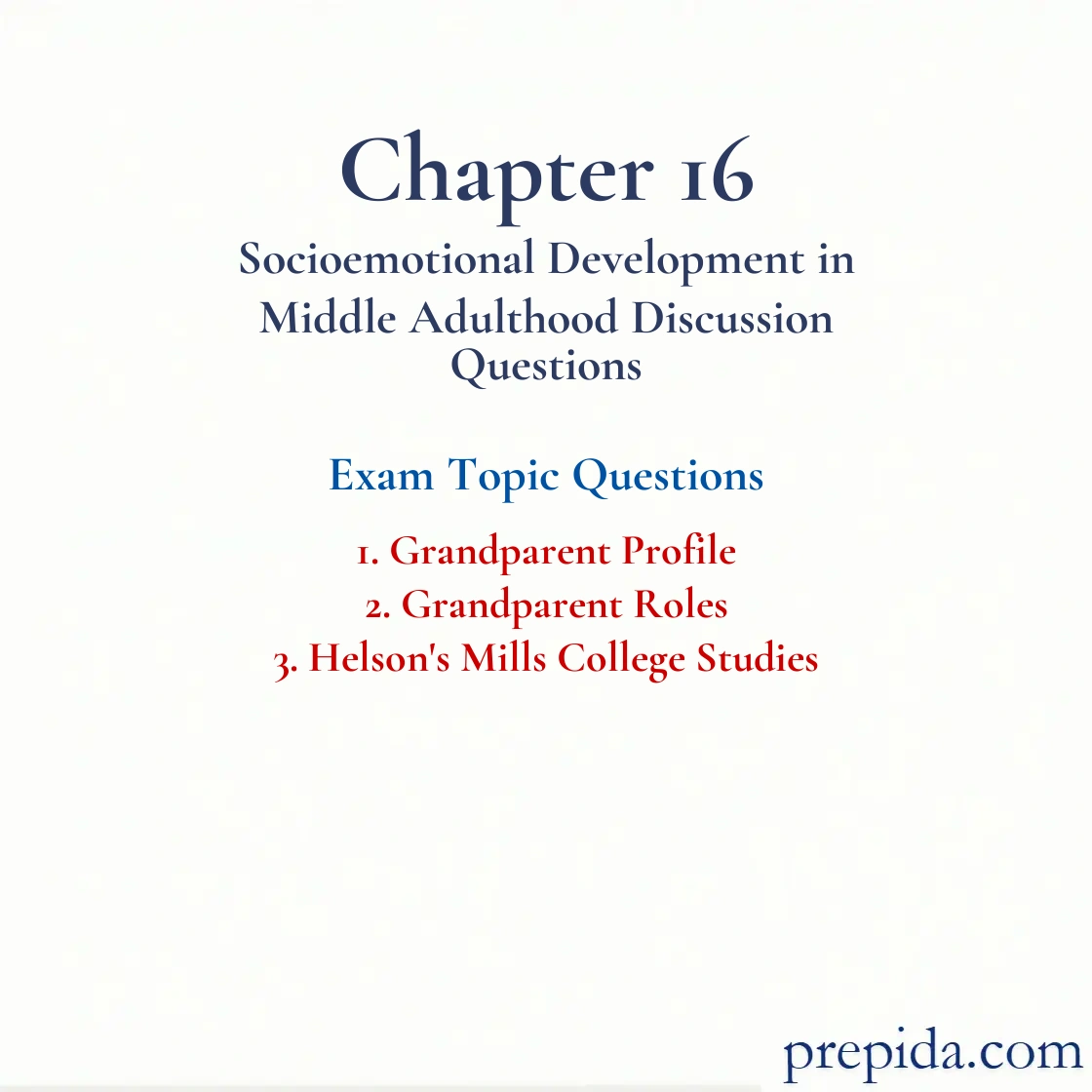
Almost half of the grandchildren who move in with grandparents are raised by
- both grandparents.
- a single grandmother.
- a single grandfather.
- both paternal and maternal grandparents.
Which of the following statements is true of grandparents providing full-time care for their grandchildren?
- At least half of the grandparents who move in with their children are nonimmigrants.
- The majority of grandparents who move in with their children and grandchildren are in poverty.
- More grandfathers than grandmothers take care of their grandchildren.
- The majority of grandparents who move in to take care of their grandchildren also contribute to the family income.
Eldercare: Physical and emotional caretaking for older members of the family, whether by giving day-to-day physical assistance or by being responsible for overseeing such care.
Which of the following is one of the main reasons that grandparents are thrust back into the "parenting" role they thought they had shed?
- spousal abuse
- adolescent pregnancies
- financial problems
- filling the "empty nest"
Adolescent Egocentrism: The heightened self-consciousness of adolescents.
According to a study conducted by Neugarten and Weinstein in 1964, which of the following was a difference between the formal and the distant styles of grandparenting?
- Grandparents who were over the age of 65 were more likely to display a distant style, whereas grandparents under 65 were more likely to display a formal style.
- In the formal style, the grandparent gave child-rearing advice to his or her grandchildren, whereas in the distant style, the grandparent was careful not to give child-rearing advice to his or her grandchildren.
- In the formal style, the grandparent performed what was considered to be a proper and prescribed role, whereas in the distant style, the grandparent was benevolent but interaction was infrequent.
- In the formal style, the grandparent considered his or her grandchildren as a source of leisure activity, whereas in the distant style, the grandparent was unaffectionate toward his or her grandchildren.
Grandparents under 65 are more likely to display a ________ style of grandparenting.
- formal
- remote
- fun-seeking
- distant
Which of the following is a factor that could undermine the influence of increases in longevity on the nature of grandparenting?
- changing gender roles in child rearing
- early marriage and childbirth
- single-parenting and same-sex parents
- the current trend of delaying childbearing
According to Neugarten and Weinstein, which of the following is one of the prominent meanings attached to being a grandparent?
- a sense of extrinsic reward
- a central role
- a financial strain
- a source of emotional self-fulfillment
Emotion: Feeling, or affect, that occurs when a person is in a state or interaction that is important to him or her. Emotion is characterized by behavior that reflects (expresses) the pleasantness or unpleasantness of the state a person is in or the transactions being experienced.
Jasper's grandparents show a strong interest in all their grandchildren but are careful not to give child-rearing advice. They are using the ________ style of grandparenting.
- formal
- remote
- fun-seeking
- distant
Language: A form of communication, whether spoken, written, or signed, that is based on a system of symbols. Language consists of the words used by a community and the rules for varying and combining them.
Joan has three grandchildren whom she loves dearly but sees infrequently. Neugarten and Weinstein would classify Joan's grandparenting style as
- formal.
- informal.
- fun-seeking.
- distant.
David and Tina have one grandson, Dillon. They see him almost every weekend and make it a point to go to a movie or a park with him. Both Dillon and his grandparents look forward to their time together. According to Neugarten and Weinstein, David and Tina have a(n) ________ style of grandparenting.
- formal
- informal
- fun-seeking
- cohesive
Which of the following was one of the groups distinguished by Helson and her colleagues in the Mills College Study?
- women with children who pursued only low-level work
- women who were career-oriented
- women who were single mothers and had aged, dependent parents
- women who were divorced
Gender Role: A set of expectations that prescribes how females or males should think, act, and feel.
The researchers in the Mills College Study concluded that rather than being in a midlife crisis, the women were experiencing
- perimenopausal agitation.
- a midlife consciousness.
- the empty nest syndrome.
- generational unlearning.
Crisis: Marcia’s term for a period of identity development during which the adolescent is exploring alternatives.
According to Helson's Mills College Study, women who did not commit themselves to one of the lifestyle patterns (family-oriented, career-oriented, and those who followed neither path)
- were more prone to depression than those who followed one of these.
- had a history of insecure attachment in childhood.
- faced fewer challenges and did not develop as fully as the other women.
- were more prone to experience marital dissatisfaction than other women.
Identity Diffusion: Marcia’s term for the status of individuals who have not yet experienced a crisis (explored meaningful alternatives) or made any commitments.